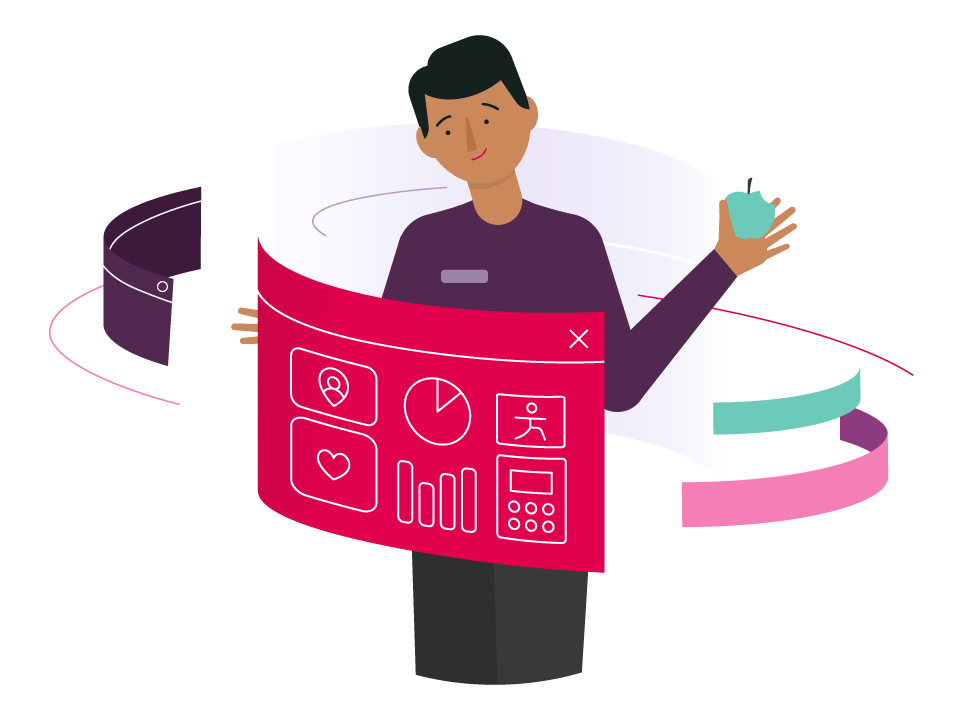Using this guide What's covered
Here you’ll find the answers to many of your questions about hysteroscopy. Learn how the procedure is done, what it may cost, what your recovery may be like, and more.
To see how this procedure is done, view our animation below. For personal insights, see our patient experience videos in which HCF members talk frankly about their preparation, their procedure and their recovery.
Cost indicator
Discover the typical out-of-pocket costs HCF members can expect to pay for a hysteroscopy and learn how your choice of doctor and hospital affect that cost.
The basics
A hysteroscopy is a procedure that’s used to view the inside of your uterus (womb).
How is it done?
It’s done using a hysteroscope, which is a narrow tube with a light and camera at the end. Your doctor guides the instrument into your uterus via your vagina and cervix, so no incisions need to be made in your skin. The hysteroscope sends images to a monitor so your gynaecologist can look for any abnormalities in your uterus.
Why is it done?
A hysteroscopy is used to diagnose conditions such as fibroids and polyps (non-cancerous growths). It’s also a good way to investigate problems like heavy periods, unusual vaginal bleeding, postmenopausal bleeding, pelvic pain, repeated miscarriages or infertility.
Diagnostic hysteroscopy combined with biopsy is a highly accurate way to diagnose uterine cancer.
Once a diagnosis has been made, your gynaecologist can use the hysteroscopic technique to take samples of the tissue inside your uterus and to treat certain conditions. This is known as an operative hysteroscopy. Fine instruments can be inserted through channels in the hysteroscope and used to:
- Correct intrauterine adhesions (scar tissue)
- Remove fibroids or polyps
- Remove a displaced intra-uterine device (IUD)
- Remove or cauterise (burn) the lining of your womb (endometrial ablation)
- Release a blockage in your fallopian tubes that’s preventing conception
- Remove a congenital septum inside your uterus
- Investigate bleeding after childbirth
It’s different to colposcopy
Colposcopy is a similar procedure which your doctor can use to view and take biopsies from your vulva, vagina and cervix. Colposcopy doesn’t extend to the inside of your uterus.
Where is it done?
A simple diagnostic hysteroscopy may be done in your doctor’s rooms. An operative hysteroscopy (where your doctor performs a therapeutic procedure at the same time) is done in a day-stay clinic or hospital.
How long does it take?
It can take between 5 to 60 minutes, depending on whether other procedures are done at the same time.
Who is involved?
- A gynaecologist
- Possibly an assistant surgeon
- Possibly an anaesthetist
- Nurses
- Possibly a pathologist
The details
Considering the procedure
Alternatives to a hysteroscopy
Are there any other options?
Results vs. risks of the procedure
The benefits and potential complications of the procedure.
Choosing a specialist
How to find a gynaecologist
PREPARATION
Questions for your doctor
What you should be asking before going ahead with a hysteroscopy.
Preparing for your procedure
What you need to do before your procedure
Your anaesthetic options
About the anaesthetic and post-procedure pain relief.
YOUR PROCEDURE
Going to hospital
What to expect on the day of the procedure.
Your procedure
What happens?
RECOVERY
After your procedure
What happens before you go home
Aftercare
Taking precautions and resuming activities
Patient experiences
Give us feedback
Did you find this guide helpful? Let us know what you liked or what we can do to improve it. We'd love to hear from you.
To provide feedback, email us at wellbeing@hcf.com.au.
Related articles
FIND A HEALTH PROFESSIONAL
Search for providers who participate in our More for You program. Find physios, chiros, podiatrists and more.
SECOND OPINION
Eligible HCF members can get a free second opinion on their health condition from a certified, practising medical specialist.
Find a doctor
Search for specialists who participate in our Medicover no-gap or known-gap scheme.







